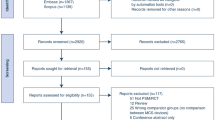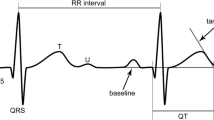Abstract
Purpose
The study aim was to evaluate patient acceptance and content with remote follow-up (FU) of their implantable cardioverter defibrillator (ICD) and to estimate patients’ wish for changes in remote follow-up routines.
Methods
Four hundred seventy-four ICD patients at the device follow-up clinic at Rigshospitalet using CareLink® (Medtronic) remote follow-up, who had made ≥2 transmissions, received a questionnaire.
Results
Three hundred eighty-five patients (81.2%) answered. Mean time with ICD was 56 ± 45 months and mean age was 62 ± 13 years; 80% was male. Diagnosis related to ICD implant was: ischemic heart disease in 56% and dilated cardiomyopathy in 21%. Twenty-six percent had primary prophylactic indication. Mean time on remote FU was 16.4 ± 6.9 months. Mean time spent on in-clinic FU (two-way transport and FU) was 4 h and 36 min ± 7 h and 50 min, excluding 12 patients from Greenland and Faroe Islands. Ninety-five percent of the patients was very content or content with remote FU compared to in-clinic FU; 3% was less content and 2% was not content. For scheduled transmissions, 21% of the patients wished for a faster reply (sms or e-mail) compared to current practice with a letter. Eighty-four percent preferred more detailed information concerning ICD leads, battery status, and ICD therapies. A total of 96 patients (25%) had performed extra unscheduled remote transmissions: 20 due to shock, 20 due to alarm, 35 due to palpitations, and 18 for other or combined reasons.
Conclusion
Ninety-five percent of the patients were content with the remote FU. Only 25% had unscheduled transmissions and most unscheduled transmissions were for appropriate reasons. Eighty-four percent of the patients wished for a more detailed response and 21% wished for a faster reply after routine transmissions.





Similar content being viewed by others
References
Moss, A. J., Hall, W. J., Cannom, D. S., et al. (1996). Improved survival with an implanted defibrillator in patients with coronary disease at high risk for ventricular arrhythmia. New England Journal of Medicine, 335, 1933–1940.
Moss, A. J., Zareba, W., Hall, W. J., et al. (2002). Prophylactic implantation of a defibrillator in patients with myocardial infarction and reduced ejection fraction. New England Journal of Medicine, 346, 877–883.
Bardy, G. H., Lee, K. L., Mark, D. B., et al. (2005). Amiodarone or an implantable defibrillator for congestive heart failure. New England Journal of Medicine, 352, 225–237.
Goldberger, Z., & Lampert, R. (2006). Implantable cardioverter-defibrillators: expanding indications and technologies. Journal of the American Medical Association (JAMA), 295(7), 809–818.
Wilkoff, B. L., Auricchio, A., Brugada, J., Cowie, M., Ellenbogen, K. A., Gillis, A. M., et al. (2008). HRS/EHRA expert consensus on the monitoring of cardiovascular implantable electronic devices (CIEDs): description of techniques, indications, personnel, frequency and ethical considerations. Heart Rhythm, 5(6), 907–925.
Brugada, P. (2006). What evidence do we have to replace in-hospital implantable cardioverter defibrillator follow-up? Clinical Research on Cardiology, 95(Suppl 3), III3–III9.
Deharo, J. C., & Djiane, P. (2006). Home monitoring: what can we expect in the future? Clinical Research on Cardiology, 95(Suppl 3), III36–III39.
Heidbuchel, H., Lioen, P., Foulon, S., Huybrechts, W., Ector, J., Willems, R., et al. (2008). Potential role of remote monitoring for scheduled and unscheduled evaluations of patients with an implantable defibrillator. Europace, 10(3), 351–357.
Ricci, R. P., Morichelli, L., & Santini, M. (2008). Home monitoring remote control of pacemaker and implantable cardioverter defibrillator patients in clinical practice: impact on medical management and health-care resource utilization. Europace, 10(2), 164–170.
Burri, H., & Senouf, D. (2009). Remote monitoring and follow-up of pacemakers and implantable cardioverter defibrillators. Europace, 11(6), 701–709.
Raatikainen, M. J., Uusimaa, P., van Ginneken, M. M., Janssen, J. P., & Linnaluoto, M. (2008). Remote monitoring of implantable cardioverter defibrillator patients: a safe, time-saving, and cost-effective means for follow-up. Europace, 10(10), 1145–1151.
Bikou, O., Licka, M., Kathoefer, S., Katus, H. A., & Bauer, A. (2010). Cost savings and safety of ICD remote control by telephone: a prospective, observational study. Journal of Telemedicine and Telecare, 16(7), 403–408.
Lazarus, A. (2007). Remote, wireless, ambulatory monitoring of implantable pacemakers, cardioverter defibrillators, and cardiac resynchronization therapy systems: analysis of a worldwide database. Pacing and Clinical Electrophysiology, 30(Suppl 1), S2–S12.
Nielsen, J. C., Kottkamp, H., Zabel, M., Aliot, E., Kreutzer, U., Bauer, A., et al. (2008). Automatic home monitoring of implantable cardioverter defibrillators. Europace, 10(6), 729–735.
Al-Khatib, S. M., Piccini, J. P., Knight, D., Stewart, M., Clapp-Channing, N., & Sanders, G. D. (2010). Remote monitoring of implantable cardioverter defibrillators versus quarterly device interrogations in clinic: results from a randomized pilot clinical trial. Journal of Cardiovascular Electrophysiology, 21(5), 545–550.
Matlock, D. D. (2010). Big Brother is watching you: what do patients think about ICD home monitoring? Circulation, 122(4), 319–321.
Ricci, R. P., Morichelli, L., Quarta, L., Sassi, A., Porfili, A., Laudadio, M. T., et al. (2010). Long-term patient acceptance of and satisfaction with implanted device remote monitoring. Europace, 12, 674–679.
Danish Pacemaker and ICD-Registry. www.icddata.dk.
Varma, N., Michalski, J., Epstein, A. E., & Schweikert, R. (2010). Automatic remote monitoring of implantable cardioverter-defibrillator lead and generator performance: the lumos-T safely RedUceS RouTine office device follow-up (TRUST) trial. Circulatory and Arrhythmetic Electrophysiology, 3(5), 428–436.
Saxon, L. A., Hayes, D. L., Gilliam, F. R., Heidenreich, P. A., Day, J., Seth, M., et al. (2010). Long-term outcome after ICD and CRT implantation and influence of remote device follow-up: the ALTITUDE survival study. Circulation, 122(23), 2359–2367.
Spencker, S., Coban, N., Koch, L., Schirdewan, A., & Muller, D. (2009). Potential role of home monitoring to reduce inappropriate shocks in implantable cardioverter-defibrillator patients due to lead failure. Europace, 11(4), 483–488.
Crossley, G. H., Boyle, A., Vitense, H., Chang, Y., & Mead, R. H. (2011). CONNECT investigators. The CONNECT (Clinical Evaluation of Remote Notification to Reduce Time to Clinical Decision) trial: the value of wireless remote monitoring with automatic clinician alerts. Journal of the American College of Cardiology, 57(10), 1181–1189.
Marzegalli, M., Lunati, M., Landolina, M., Perego, G. B., Ricci, R. P., Guenzati, G., et al. (2008). Remote monitoring of CRT-ICD: the multicenter Italian CareLink evaluation—ease of use, acceptance, and organizational implications. Pacing and Clinical Electrophysiology, 31(10), 1259–1264.
Author information
Authors and Affiliations
Corresponding author
Rights and permissions
About this article
Cite this article
Petersen, H.H., Larsen, M.C.J., Nielsen, O.W. et al. Patient satisfaction and suggestions for improvement of remote ICD monitoring. J Interv Card Electrophysiol 34, 317–324 (2012). https://doi.org/10.1007/s10840-012-9675-4
Received:
Accepted:
Published:
Issue Date:
DOI: https://doi.org/10.1007/s10840-012-9675-4




